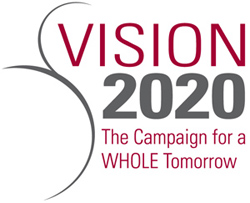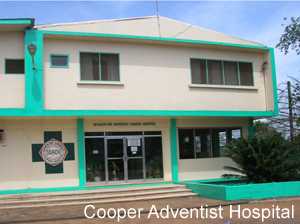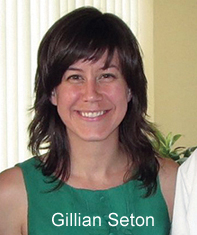<
 |
| August 2014 |
|
Roots
I needed to do it. My parents, Ruth and Lewis Hart, are now 93, and suffering from the usual frailties of the aging process. Having lived most of their lives in the beautiful Northwest, they had the desire to make one more visit to their old stomping grounds, visiting relatives and friends. So Judy and I flew to Portland with them, rented a small motor home, and spent 12 glorious days driving to Troy and Moscow, Idaho; Spokane, Yakima, and College Place, Washington; and Portland and Roseburg, Oregon. We visited the old homestead where Dad grew up in Moscow, and my boyhood home in Troy. I heard old stories repeated and a few new ones. One I hadn’t heard was that my Grandpa Hart, with only an eighth-grade education and scratching out a living homesteading a few acres on the side of Moscow Mountain, was an early member of the National Geographic Society in 1914. This explains the shelves and shelves of magazines I remember at their home and his immense knowledge of the world despite never being able to travel. I also heard of his precious “telescope” being conscripted by the U.S. Department of War in 1942, and then returned at the end of World War II, well used, with a personal thank you from Franklin Roosevelt. How I wish I could talk to him again and share about my own travels. Roots are important. They define who we are, explain our behaviors, and even chart our future. As part of Vision 2020 at Loma Linda University Health, we are spending a lot of time trying to look forward, many years forward, wondering what health care will be like 20, 30, even 50 years from now. How will health care be practiced? What new technologies can we expect? As I shared last month, we have already been blessed with generous donors to Vision 2020, those who have confidence we have figured out those questions and will remain effective in whatever context emerges next. One thing I am certain about is that human emotions requiring personal connections, close relationships, and compassionate care will not become outdated in health care. Regardless of technology or circumstances, we will continue to have those needs and they must guide Loma Linda in its educational and service objectives for the future. So how do we anchor our future in a way that gives us confidence we are on the right path? What road map, what GPS, can we program to get us where we want to be? A friend recently sent me a quote from Ellen White, one of the founders of Loma Linda, which I found powerful. In 1903 she said, “Again and again I have been shown that the past experiences of God’s people are not to be counted as dead facts. We are not to treat the record of these experiences as we would treat a last-year’s almanac. The record is to be kept in mind, for history will repeat itself.” Sobering! As stewards of that history, are we using it well? How do we continue to anchor our future plans in the mission of this place, over a century of trials and triumphs, of tough decisions made by convicted individuals? I particularly worry about that as we continue to grow, in both size and complexity. How do we keep 15,000 employees and nearly 5,000 students sharing a common mission and purpose? Some would argue that we are already too big. Yet it seems impossible to train the diversity, quality, and number of graduates needed to staff our hospitals, clinics, and projects around the world without an institution of this size and complexity. Within those realities, how do we keep our focus in today’s world?
Probably the strongest compass in guiding Loma Linda’s path has been its continual commitment to serving others. It has been a central part of our student life, of our faculty and staff, and certainly of our alumni. When a person honestly confronts human need, in whatever form it occurs, it forces one to ask basic questions. Why did this happen? What should I do about it? Why me? Why here? Why now? My personal belief is that there is no better crucible for shaping our thoughts and actions than continually, deliberately placing ourselves in direct contact with those in need. So all of our service activities are not just about helping others, they are also about helping ourselves. They help us to clarify our strengths and weaknesses, refine our goals in life, and provide the framework for personal and corporate decisions. So my burden, my goal, over the next few years of Vision 2020 will be to use our incredible history to give us confidence in our future. This is a very special place, not put on this earth for any ordinary purpose. Maintaining our commitment to service will help to focus our strategies and provide us with many guideposts for our future travels. In closing I want to share with you a current example of this service commitment. Several years ago, two small hospitals joined Adventist Health International (AHI), a nonprofit organization based here at Loma Linda that works with Adventist mission hospitals in developing countries. They were Cooper Adventist Hospital in Monrovia, Liberia, and Waterloo Hospital in
Our staff at Cooper Hospital, led by their young surgeon, Gillian Seton, contacted us a week ago, saying they wanted to keep the hospital open. After carefully assessing the issues, we agreed to send in supplemental funding, necessary supplies for infection control, and expertise to help in this emergency. Gillian graduated from LLU School of Medicine in 2008, took her surgery specialty, and started on a career of service in February under some of the most challenging circumstances. Fellow alumnus James Appel (he of the remarkable stories from Chad) has agreed to join her to care for the enormous workload inundating Cooper as the only hospital left open to serve the 1 million population in Monrovia. You can follow this ongoing story on the AHI or LLU websites at www.ahiglobal.org or www.llu.edu. Please keep these brave young professionals in your prayers. And add a petition for this institution we call Loma Linda, striving to prepare just this kind of professional, willing to fully engage in a life of service. Cordially yours, Richard Hart |


 What will be the balance of outpatient versus inpatient services? What will hospitals look like? How do we prepare our students for that world?
What will be the balance of outpatient versus inpatient services? What will hospitals look like? How do we prepare our students for that world?
 Freetown, Sierra Leone. As the world now knows, these institutions are at ground zero of the current Ebola outbreak in West Africa. Many hospitals in these countries have closed due to fear by both patients and hospital staff of contact with infected patients. Our staff members have struggled with the decision of what to do, balancing their own safety against the continuing medical needs of their patients. They recognized that the patients without Ebola virus disease still needed urgent care for things like obstetrical emergencies, severe trauma, life-threatening malaria, etc.
Freetown, Sierra Leone. As the world now knows, these institutions are at ground zero of the current Ebola outbreak in West Africa. Many hospitals in these countries have closed due to fear by both patients and hospital staff of contact with infected patients. Our staff members have struggled with the decision of what to do, balancing their own safety against the continuing medical needs of their patients. They recognized that the patients without Ebola virus disease still needed urgent care for things like obstetrical emergencies, severe trauma, life-threatening malaria, etc.